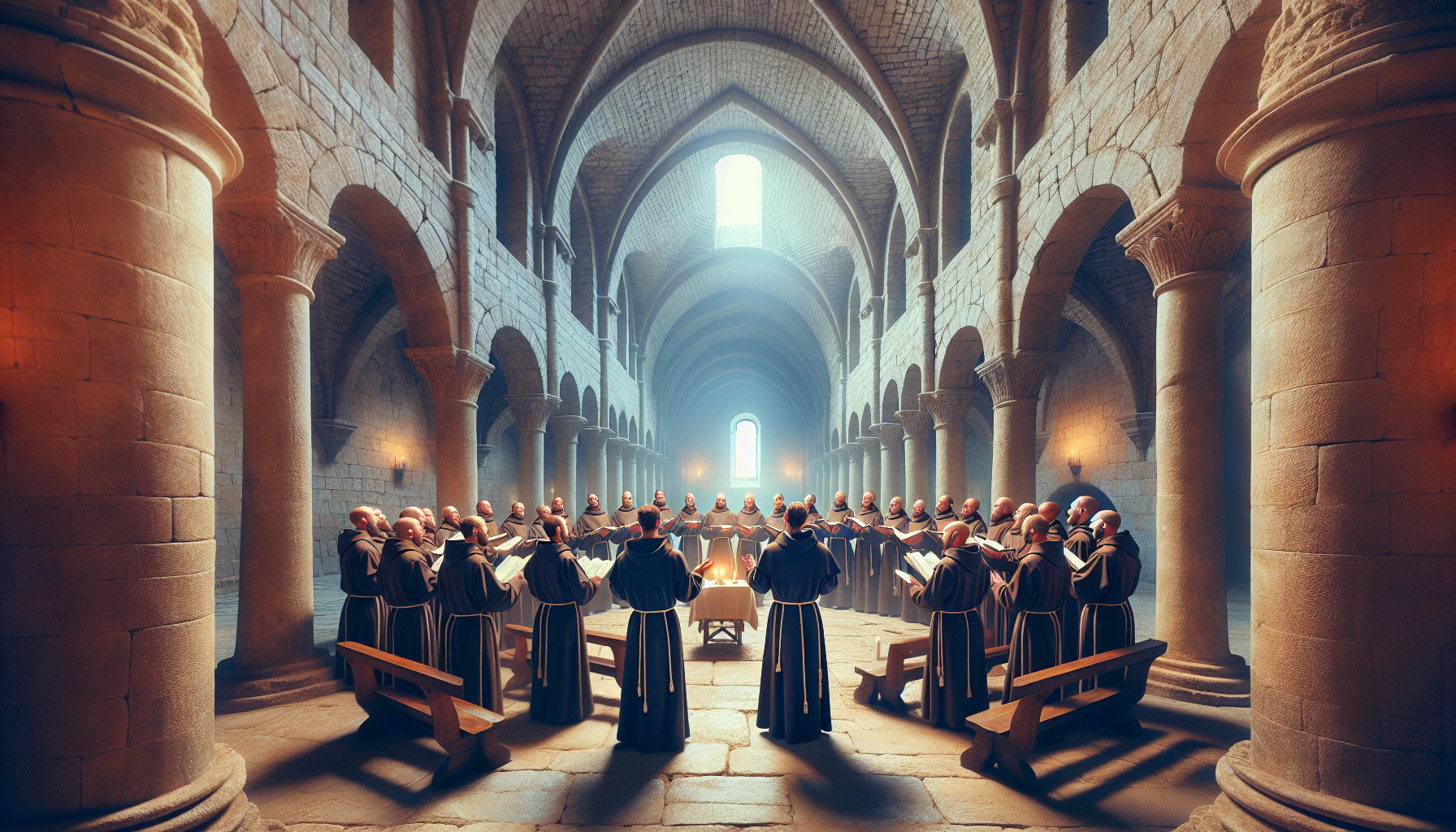Gregorian chant, the cornerstone of Western plainchant, has captivated listeners for centuries with its hauntingly serene melodies and spiritual depth. Rooted deeply in the traditions of the Roman Catholic Church, it serves as a sonic emblem of monastic life, echoing through the hallowed halls of abbeys and cathedrals.
Historical Origins
Named after Pope Gregory I, who reigned from 590 to 604 AD, Gregorian chant is believed to have been organized and codified under his auspices. According to the Encyclopaedia Britannica, “Although popular legend credits Pope Gregory I with inventing Gregorian chant, scholars believe that it arose from a later synthesis of Roman and Gallican chant.” (Source).
Musical Characteristics
Gregorian chant is characterized by its monophonic texture, meaning it consists of a single melodic line without harmonic support. The rhythm is free and follows the natural flow of the Latin text. The melodies are modal, using scales that predate the major and minor scales of modern Western music.
- Monophonic Texture: A single, unaccompanied melody.
- Modal Melodies: Utilizes ancient scales, known as modes.
- Free Rhythm: Lacks a strict meter, follows the text.
The Spiritual Significance
For the monks who perform these chants, the practice is more than a musical exercise; it is a form of prayer. As Dr. Peter Jeffery writes in The Study of Medieval Chant, “Gregorian chant is a sung theology, a musical exegesis of the Holy Scriptures.” Its ethereal qualities are designed to elevate the soul, drawing both chanters and listeners closer to the divine.
“Gregorian chant is not just something to be sung, but something to be lived.” – Dom Jean Claire, former choirmaster at the Abbey of Solesmes
Modern Resurgence
In recent decades, Gregorian chant has experienced a resurgence in popularity beyond ecclesiastical settings. The release of Chant by the Benedictine Monks of Santo Domingo de Silos in 1994 reached unexpected commercial success, bringing the ancient art form to a global audience.
Today’s performers and enthusiasts find solace and inspiration in the chant’s tranquil melodies. Whether heard in a sacred space or through modern recordings, Gregorian chant continues to resonate, sounding the heart of monastic tradition and spirituality.
